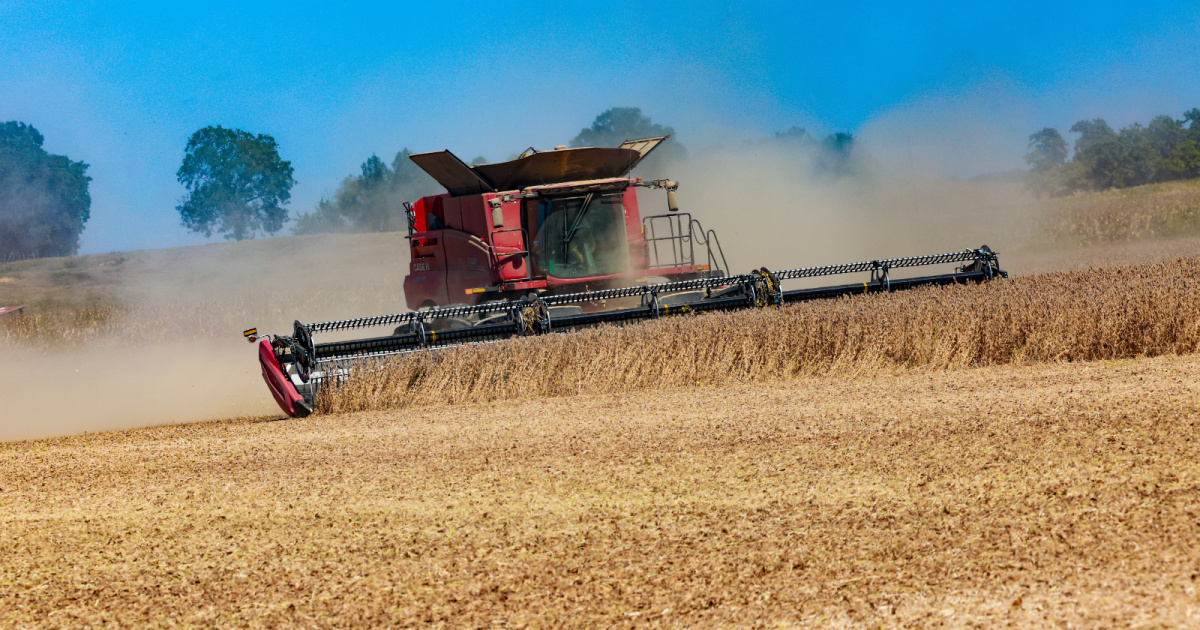As the 2025 Harvest Continues
Posted on Oct 17, 2025
The wettest spring coupled with the driest August has created varied results as farmers continue their harvest.
LOUISVILLE Ky. – This growing season has been plagued with issues and challenges from a wetter than normal spring planting time to drought conditions at a critical juncture in the growing season, especially for soybeans.
U.S. Drought Monitor data indicated that the state was clear of any dry conditions as of its July 29 report, a situation that changed significantly by the end of August, when the majority of the state was categorized as abnormally dry, with some areas experiencing severe drought conditions.
Dr. Jerry Brotzge, Kentucky State Climatologist and director of the Kentucky Climate Center and Kentucky Mesonet at Western Kentucky University, said August was one for the record books.
“We had a statewide average of 1.29 inches of rain, which was the driest August on record out of 131 years, dating back to 1895,” he said. “This beat out the previous record holder of 1925 with 1.48 inches statewide.”
As of this writing, a significant rainfall event was expected to move through the state during the third week of September. Chad Lee, Director of the Grain and Forage Center of Excellence and Grain Crops Extension Professor at the University of Kentucky's Martin-Gatton College of Agriculture, Food, and Environment, said this band of precipitation likely came too late to help most crops.
“It may help some of the late soybeans a bit and will help forages enough to maybe help get one more cutting of hay,” he said.
That’s not to say that some crops won’t be good—or maybe excellent in a few spots— depending on locations of where rainfall was experienced during the critical summer months of the growing season.
Scott, Lemmons, the Deputy Regional Director of the National Agricultural Statistics Service (NASS) Eastern Mountain Region, said crops, especially corn, could turn out to be better than many were expecting, considering how dry it has been.
“Things don’t look too bad for corn. I would say an average or better than average year is what we're looking at right now,” he said. “It’s not great, but not as bad as it could be in a really dry year. But I think the drought conditions are impacting beans a little bit more.”
As of the September 12 crop condition report from the NASS, approximately half of Kentucky’s corn crop was listed as good to excellent, while less than 40 percent of the soybean crop was in the same category.
In comparing this year’s expected harvests to last year, corn yield averages were expected to be approximately 175 bushels per acre, a 1.7 percent drop from 2024’s crop. The average soybean yield was projected to be about 40 bushels per acre, a nearly 17 percent drop from last year.
However, yield numbers are a mixed bag as the harvest continues, with some farmers seeing 60-plus bushels in their early soybean crops while others have experienced yields of 30 or less.
The same is true with corn. There are reported yields as high as 290 bushels and others below 140. As one producer put it, that 290 yield reflects the most expensive crop he has ever grown.
While Kentucky farm families are riding the harvest roller coaster, continuing to hope decent yields prevail. Nationally, especially with the 2025 corn crop, it is about to bust a record.
The USDA September crop report is projecting a 16.8-billion-bushel crop, the largest ever. The soybean crop looks to top the 4.30-billion-bushel mark, certainly not a record but close to levels noted over the last 10 years, in the report.
Eston Glover, general manager for the Hopkinsville Elevator Cooperative, agrees that the national corn crop will likely be a record as farmers bring in crops to their facility.
“There's no question about it, we're talking 1.9 billion bushels more of corn than last year,” he said. “In our area, Southern Illinois, Southern Indiana, Southern Ohio, Tennessee, Kentucky, I think you're going to be looking at average crops. But above I-70, I think you're going to be looking at monster crops.”
Hopkinsville Elevator is a member-owned cooperative with approximately 3,500 member- owners and seven locations spread out primarily in Kentucky and Tennessee. The organization also has divisions in agronomy, and crop insurance, as well as ethanol by way of the Commonwealth Agri-Energy, a 50-million-gallon ethanol plant in Hopkinsville, which is where most of the corn coming to the elevator goes, Glover added.
“Domestic demand is still good, but we've got that 1.9 billion bushels more that we're going to have something to do with it and for some states, a place to put it,” he said. “Ground storage may be an option, I think in other areas, with these monster crops. They just make a bigger ground pile. We’ve never had that luxury in this area or maybe have never taken that risk, but you just don't see the ground piles here. And storage should not be an issue in this state for this crop year.”
Tagged Post Topics Include: USDA, NASS, Driest August record, Soybeans, Climatologist, US Drought Monitor, Harvest Season
Comments